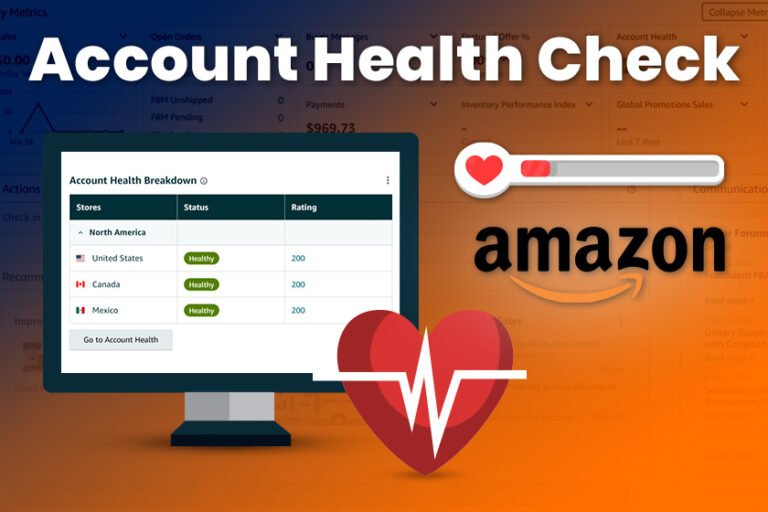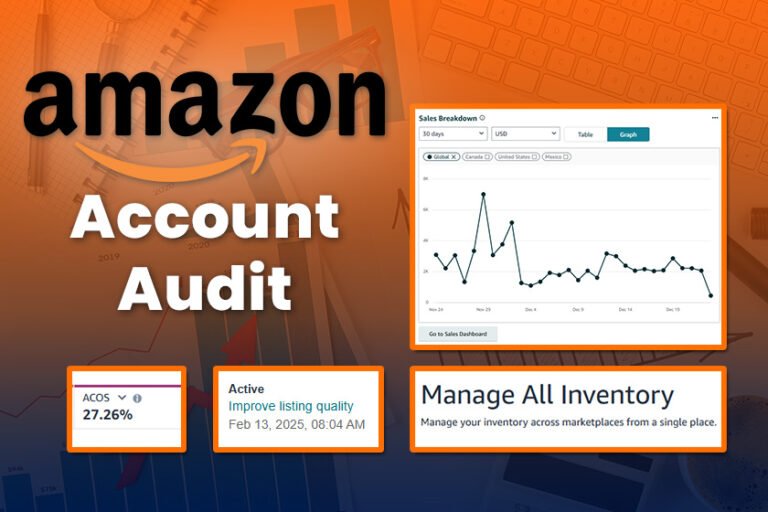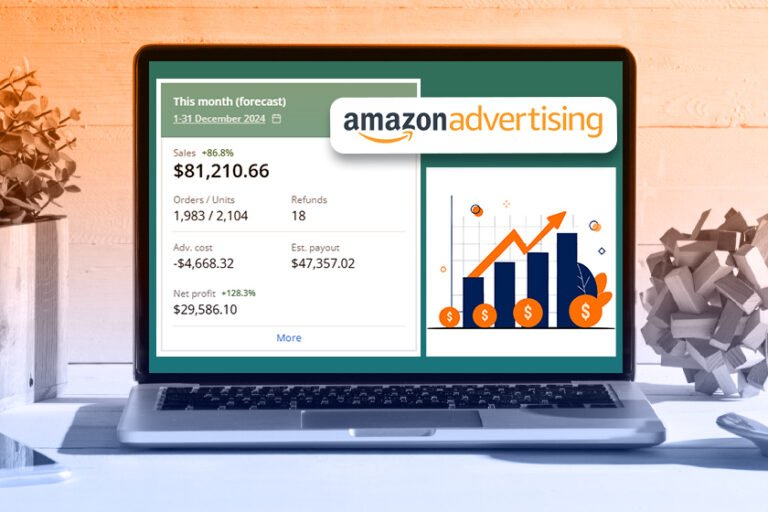Choosing how to fulfill your Amazon orders is a HUGE decision. It boils down to 2 primary options: Fulfillment by Amazon (FBA) or Fulfillment by Merchant (FBM). Both have their own pros and cons, and the right choice depends entirely on your specific business needs.
Bear in mind that choosing the right fulfillment method can significantly impact your profitability, scalability, and operational efficiency. You just need to find the one that best aligns with your business goals.
This is a comprehensive guide that discusses the comparison of FBA and FBM by looking at their costs, control, profits, and more, to help you be more confident in your decision about choosing the fulfillment model that works best for you.
Here is a simplified yet complete overview about pros and cons of Amazon FBA & FBM programs:
What is Amazon FBA (Fulfillment by Amazon)?
Amazon FBA lets sellers store their inventory in Amazon’s warehouses. You ship your products to Amazon’s fulfillment centers and they handle everything that comes after: storage, picking, shipping, customer service, returns, and such.
To simplify this concept, consider it as outsourcing your entire logistics operation to an eCommerce giant. A complete hands-off approach, allowing sellers to focus on marketing and scaling their Amazon business.
Pros of FBA:
- Prime Eligibility – Products automatically get access to Amazon Prime badge, increasing visibility and sales.
- Quick Shipping – Amazon’s large logistics network ensures faster shipping and delivery.
- Customer Service & Returns – Amazon takes care of all customer inquiries and returns, thus reducing seller’s workload.
- High Conversion Rates – FBA products tend to perform better due to Amazon’s reliable fulfillment process.
Cons of Amazon FBA:
- Storage and Fulfillment Fees – FBA may add up costs specifically for large or slow-moving inventory.
- Less Control Over Inventory – Amazon handles everything from storage to shipping which can limit your control.
- Long-Term Storage Fees – Excess inventory requires additional charges if not sold within a set timeframe.
What is Amazon FBM (Fulfillment by Merchant)?
With FBM, sellers store, pack, and ship products themselves or use a third-party logistics provider (3PL).
This fulfillment model, FBM gives sellers full control over fulfillment and inventory. But FBM requires more hands-on experience and management.
Pros of FBM:
- Lower fees – No Amazon storage or fulfillment costs, thus lower fees than FBA.
- Inventory Control – Sellers manage their own stock, reducing the risk of misplacement.
- Better option for Low-margin products – Increases profit margins for products by reducing hefty FBA fees.
Cons of Amazon FBM:
- No Prime Badge – FBM Products are less appealing to Amazon Prime members, which may reduce conversions.
- Shipping & Customer Service Responsibilities – Sellers is responsible for handling everything from customer service, returns, and logistics.
- Slower Shipping Speeds – Without the Amazon’s logistics network, delivery times with FBM may be longer, affecting your competitive speed.
Which Fulfillment Option is Better For You?
There are some key factors to consider when deciding between Amazon FBA and FBM:
1. Product Type & Size
- FBA is better suited for small to medium-sized, high-demand products.
- FMB is best for oversized, fragile, or slow-moving inventory.
2. Scalability
- FBA is ideal for quick scalability without having to manage logistics.
- FBM offers control but requires strong operational infrastructure to handle growth.
3. Fulfillment Costs
- FBA fees can be high, eating away even your thin-margin products.
- FBM sellers avoid Amazon’s fulfillment fees but must cover shipping, storage, and handling costs.
4. Control and Branding
- FBM allows you to do custom packaging, branding, and personalized customer service.
- FBA standardizes the fulfillment process, thus limiting branding opportunities.
5. Customer Satisfaction & Prime Eligibility
- FBA sellers enjoy the perks of Amazon Prime badge, boosting credibility and conversions.
- FBM sellers strive to offer competitive shipping times to remain attractive to customers.
Differences Between FBA and FBM
Here are some defining characteristics to help you with deciding between FBA and FBM:
| Factor | FBA | FBM |
| Best For | High-demand, lightweight products | Large, slow-moving, or custom products |
| Shipping Speed | Quick (Amazon logistics) | Varies |
| Storage & Handling | Amazon warehouses | Seller’s warehouse or 3PL |
| Fees | Amazon fulfillment fees apply | No FBA fees, but shipping costs may apply |
| Prime Eligibility | Yes | No (unless using Seller Fulfilled Prime) |
| Customer Service | Amazon takes care of it | Seller manages everything |
| Scalability | Highly scalable | Requires seller effort |
Hybrid Approach: Using Both FBA & FBM
Many successful Amazon sellers use a hybrid fulfillment strategy, leveraging the powers of both FBA and FBM.
They use:
- FBA for fast-moving, small-to-medium-sized products.
- FBM for oversized, fragile, or thin-margin products.
- Diversify fulfillment to maintain sales during peak seasons or Amazon storage limitations.
Maximize Your Returns with Expert Fulfillment Strategies – with Shopin Ecom
Are you confused in deciding what fulfillment model is best for your Amazon business? Amazon FBA vs FBM isn’t just about logistics – its about profitability, efficiency, and growth.
We, at Shopin Ecom, help you plan your best course of action that satisfies your needs, budgets, and goals. Take advantage of our 1:1 Amazon FBA consulting services.
Our team doesn’t leave our clients halfway – rather we provide end-to-end consultation and ongoing support for newbies and veterans alike. Make use of our free initial consultation and audit services and let us plan the best fulfillment model that supercharges your business operations.
Take the first step towards growth by filling this short form and we will be in touch shortly.








